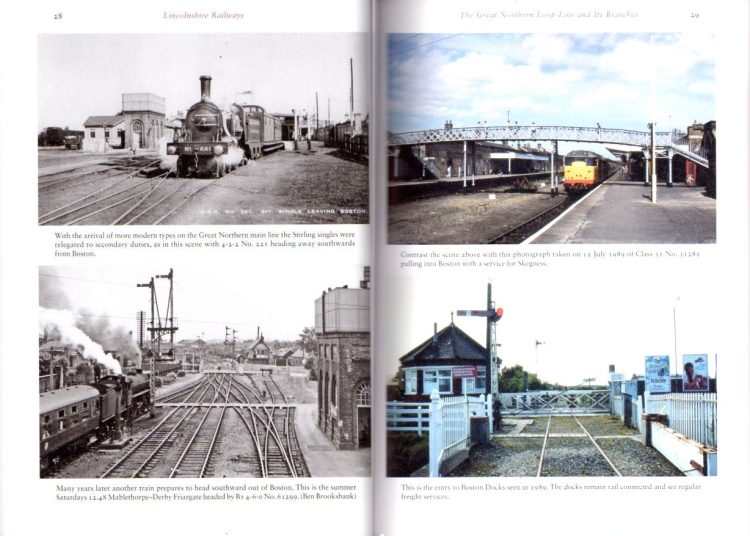This book provides an insight into the wealth of Lincolnshire's railway history. Although two companies, the Great Central and the Great Northern, dominated the county's railways, there were a large number of other companies, some being joint operations and some completely independent.
Published in October 2021 and written by Patrick Bennett, this softcover book comes in the usual Amberley format of around 234 mm x 165 mm with 96 pages and 180 colour and black-and-white-photographs. It has a published price of £15.99 but at the time of writing it can be obtained online from Amberley Publishing at £14.39 and from Amazon for £11.19.
The book has an Introduction and 15 chapters covering: The Midland at Lincoln; The Great Central in North Lincolnshire; The Great Northern Loop Line and Its Branches; Lincoln; The East Coast Main Line; Nottingham to Boston; The East Lincolnshire Railway and Its Branches; Stamford-Essendine-Bourne-Lincoln; Further Developments in North Lincolnshire; The Great Northern & Great Eastern Joint Line; The Midland & Great Northern Joint Line; The Lancashire, Derby & East Coast Railway; light Railways in North Lincolnshire; Lincolnshire's Other Railways; and Locomotive Depots.
The Introduction includes a very-clear map colour-coded for the six major companies operating in Lincolnshire at the time of the 1923 Grouping: Great Central; Great Northern; Midland; Great Northern & Great Eastern Joint; Midland & Great Northern Joint; Lancashire & Yorkshire & North Eastern Joint. Of particular interest are Railway Clearing House maps of Lincoln and Grimsby.
The author is a rail enthusiast who, from the detail in the captions, has a passion for his subject. Although he now lives in France, he provides the reader with a detailed insight into the variety of railways that once were to be found in Lincolnshire. He is to be commended for sourcing a number of rare and previously unseen photographs. Patrick Bennett documents Lincolnshire's railways.
What soon becomes apparent is the large number of small railways that, for a time, operated independently before being swallowed up by a larger concern. Unfortunately, the author has chosen to include acronyms such as SA&M, GG&SJ, H&KJR to name just a few, which, although they may be familiar to the most-avid Lincolnshire railway enthusiasts, are likely to be completely unknown by the wider readership.
The author has struck a good balance between trains ancient and modern, railway architecture and infrastructure, and stationary and operational trains. What would have been useful is a concise list of stations and operating companies and an index.
Even though Lincolnshire is Britain's second-largest county, it is surprising how many independent railways operated in the county, even down to the so-called “potato” railways, which were very basic lines that served potato farms. Also included are references to LNER's Humber ferries and Grimsby and Immingham Electric Tramway.
There are plenty of memories to be had from the contrasting scenes below.

These pages show how steam-age infrastructure persists on Lincolnshire's railways.
Lincolnshire must be the only county where railways were built specially to serve potato farms, as captured by the author in the sample below.
The book is available to purchase from Amazon for around £11.19 as well as from Amberley Publishing.
We would like to thank Amberley Publishing for providing RailAdvent with a copy of the book for review.